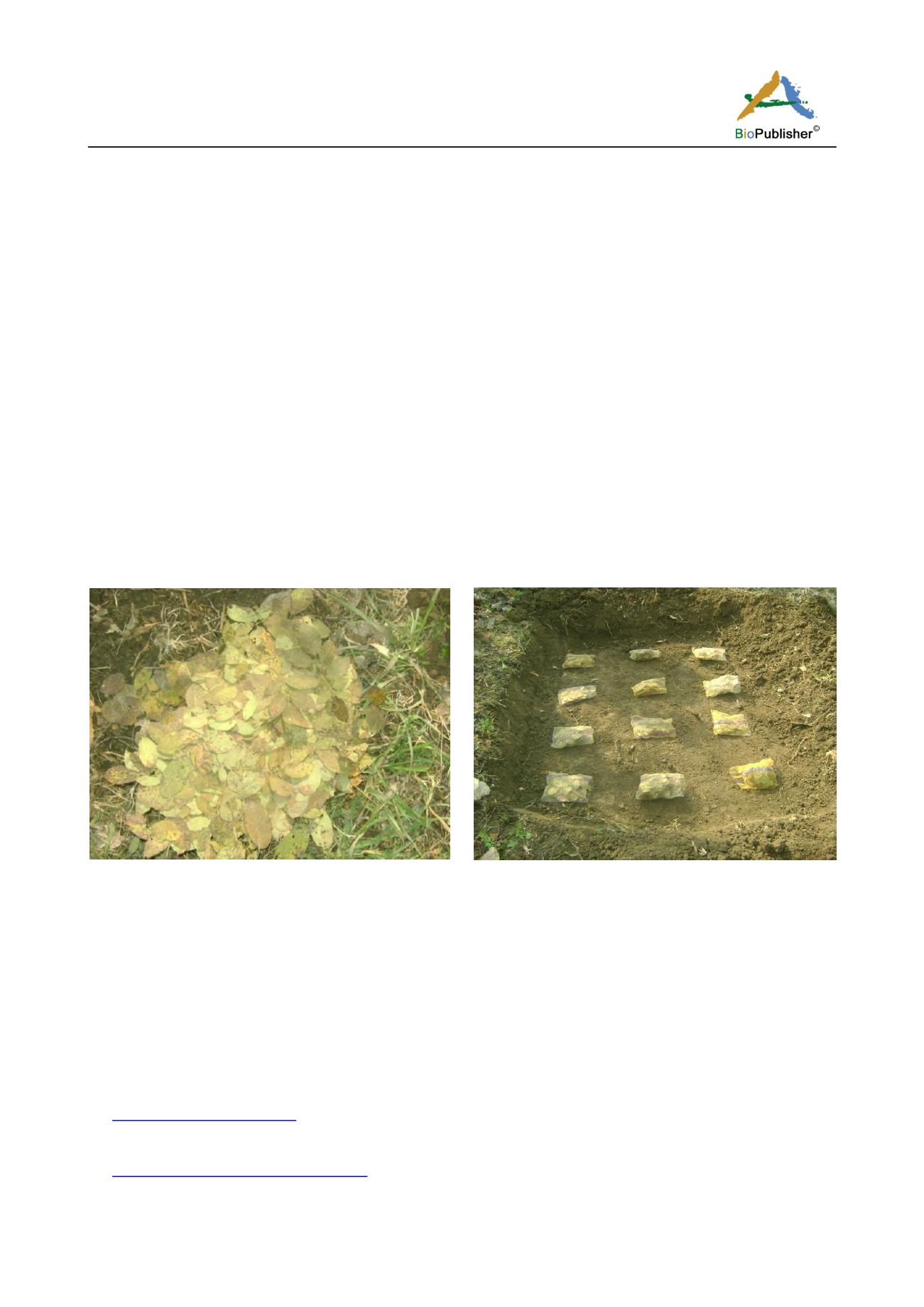
Molecular Plant Breeding 2016, Vol.7, No.25, 1
-
8
6
3 Materials and Methods
3.1 Survival of over-wintered diseased leaves and tubers
The survival of pathogen in fallen diseased leaves and tubers of susceptible potato cultivar “Kufri Jyoti” was
studied during the year 2009 and 2010 at Shalimar campus of SKUAST-K.
3.2 Survival in over-wintered diseased leaves
Diseased leaves of potato were collected on 15
th
of August in the year 2009 and 2010. The leaves were kept in
mesh wire bags, each bag containing equal number of leaves and divided into two sets. One set of such leaves
were kept on soil surface (Figure 1a) and the other at 20 cm depth (Figure 1b) in the field. The diseased leaves, in
the mesh wire bags were removed at fortnightly intervals beginning from first week of March onwards. Thirty leaf
bits of 1 cm
2
area were randomly taken from one randomly selected bag and examined for the presence of conidia.
These leaf discs were then crushed separately in 40 ml of sterilized distilled water and strained through a double
layer cheese cloth. Twenty milliliter of the filtrate was centrifuged at 6000 rpm for 15 minutes. After
centrifugation, 18 ml of the suspension was drawn off with a pipette. The pipette was re-suspended in 2 ml
sterilized water and the numbers of conidia were counted with the help of haemocytometer. To estimate the per
cent viability of conidia in over-wintered diseased leaves, spore germination method was used. Two drops of 50 µl
from each processed sample were placed on a glass slide and incubated in a moist chamber at 23±2
o
C. The
number of spores observed and the number of spores that germinated were recorded after 24 hour incubation for
calculating the per cent viability of conidia.
Figure 1 Perpetuation studies of the fungus
Note: a: Over wintering of diseased potato leaves on ground surface; b: Over wintering of diseased potato leaves at 20 cm depth
3.3 Survival on tubers
The tubers collected in autumn at the time of harvest from the diseased crop were kept in ambient store and were
periodically assessed for the presence/viability of fungal propagules. Ten randomly selected tubers were taken,
ground/crushed separately in 80 ml of sterilized distilled water and strained through a double layered cheese cloth.
The rest of the procedure was same as that of leaf sample. The per cent viability of spores was estimated as per the
method describe in above mentioned leaf samples.
References
Adams S.S., Stevenson, and W.R., 1990, Water management, disease development and potato production, American Potato Journal,
67(1): 3-11
Allen S.J., Brown J.F., and Kochman J.K., 1983, The infection processes, sporulation and survival of
Alternaria helianthi
on sunflower, Annals Appl. Biol.,
102(3): 413-419
Appaji S., 1995, Studies of
Alternaria
leaf blight disease of sunflower and development of resistant tolerant inbreds through mutation breeding, DOR Annual
a
b


